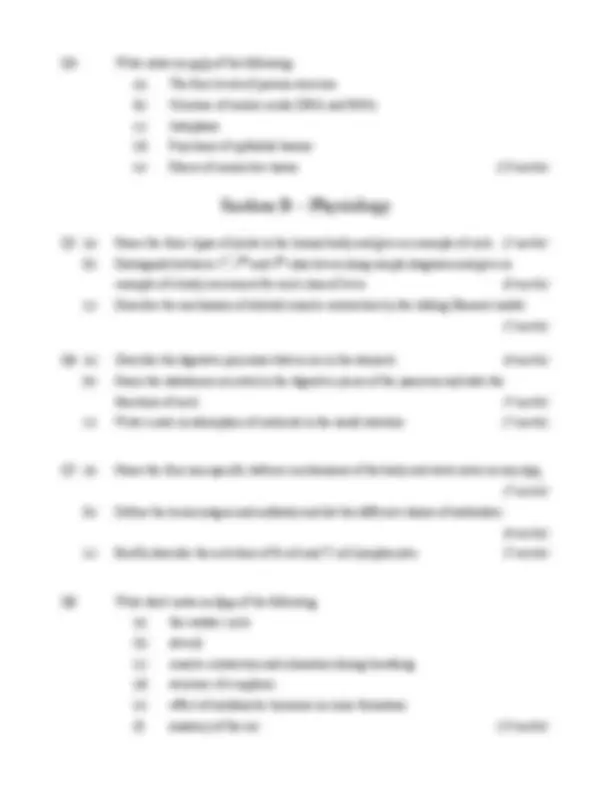



Study with the several resources on Docsity

Earn points by helping other students or get them with a premium plan


Prepare for your exams
Study with the several resources on Docsity

Earn points to download
Earn points by helping other students or get them with a premium plan
Community
Ask the community for help and clear up your study doubts
Discover the best universities in your country according to Docsity users
Free resources
Download our free guides on studying techniques, anxiety management strategies, and thesis advice from Docsity tutors
Main points of this past exam are: The Nucleus, Nucleus, Golgi Apparatus, Lysosomes, Mitochondria, Cytoskeleton, Red Blood Cells, Structure, Platelets, Structure
Typology: Exams
1 / 2

This page cannot be seen from the preview
Don't miss anything!


(NFQ - Level 6)
Answer Five Questions Examiners: Dr. Sheila Kenny Answer two questions from section A, Mr. D. Tallon Two questions from section B and one other question Prof. P. McHugh
Q1. Describe the structure (with the aid of a diagram) and name the functions for each of the following: (a) the nucleus (b) the Golgi apparatus (c) lysosomes (d) mitochondria (e) the cytoskeleton (20 marks)
Q2. (a) Describe the structure of a red blood cell and write a note on the transport of oxygen by red blood cells. (7 marks) (b) Name the five types of white blood cells and briefly describe the activities of any two. (7 marks) (c) Write a short note on the role of platelets in blood clotting (6 marks)
Q3. (a) Draw a labelled diagram showing the structure of a neuron (nerve cell). (6 marks) (b) Write a summary of the structure and function of nervous tissue. (14 marks)
Q4. Write notes on each of the following: (a) The four levels of protein structure (b) Structure of nucleic acids (DNA and RNA) (c) Interphase (d) Functions of epithelial tissues (e) Fibers of connective tissue (20 marks)
Q5. (a) Name the three types of joints in the human body and give an example of each_. (5 marks)_ (b) Distinguish between 1 st^ , 2nd^ and 3 rd^ class levers using simple diagrams and give an example of a body movement for each class of lever (8 marks) (c) Describe the mechanism of skeletal muscle contraction by the sliding filament model. (7 marks)
Q6. (a) Describe the digestive processes that occur in the stomach. (6 marks) (b) Name the substances secreted in the digestive juices of the pancreas and state the functions of each. (7 marks) (c) Write a note on absorption of nutrients in the small intestine. (7 marks)
Q7. (a) Name the four non-specific defence mechanisms of the body and write notes on any two. (7 marks) (b) Define the terms antigen and antibody and list the different classes of antibodies. (6 marks) (c) Briefly describe the activities of B cell and T cell lymphocytes. (7 marks)
Q8. Write short notes on four of the following (a) the cardiac cycle (b) alveoli (c) muscle contraction and relaxation during breathing (d) structure of a nephron (e) effect of antidiuretic hormone on urine formation (f) anatomy of the ear (20 marks)